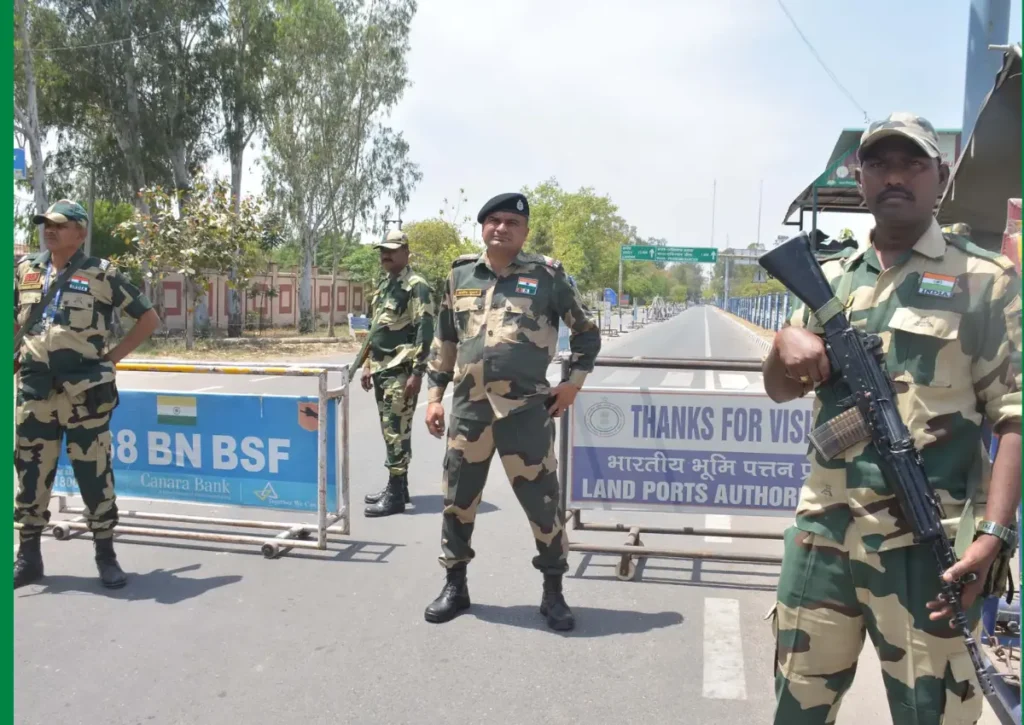By Glance Insight Newsroom | May 8, 2025
New Delhi/Islamabad — A fresh wave of violence, political tension, and military posturing has engulfed the India-Pakistan relationship after a devastating attack on Hindu pilgrims in Kashmir prompted India to conduct cross-border airstrikes. The two nuclear-armed nations now stand at a crossroads, raising alarms across the international community.
The Attack That Sparked It All: A Bloody Day in Pahalgam

On April 22, 2025, what began as a peaceful pilgrimage ended in horror when unidentified gunmen ambushed a bus carrying Hindu tourists in the Pahalgam region of Indian-administered Kashmir. In a matter of minutes, 26 people — including women, elderly citizens, and children — were brutally killed. Dozens more were injured.
The Resistance Front (TRF), a militant group believed to be backed by Pakistan-based terror networks, claimed responsibility. Indian intelligence officials linked the attack to Lashkar-e-Taiba, which has a long history of involvement in terror operations in India, including the infamous 2008 Mumbai attacks.
“This was not just an act of terror; it was an attack on the soul of India,” Indian Home Minister Rajnath Kulkarni said during a press conference following the incident.
India’s Response: Operation Sindoor
Just over two weeks later, in the early hours of May 7, India launched a swift and decisive military operation under the name Operation Sindoor. The Indian Air Force targeted alleged militant camps and training facilities deep inside Pakistan, including locations in Bahawalpur, Muridke (a known Lashkar-e-Taiba stronghold), and in parts of Pakistan-administered Kashmir.
India described the strikes as “non-military preemptive action” and claimed they were carefully planned to avoid civilian casualties.
National Security Advisor Neelabh Arora stated, “We had actionable intelligence that another attack was being planned. We couldn’t afford to wait for another massacre.”
Drone footage and satellite images released by the Indian government reportedly show the destruction of at least four terror training facilities.
Pakistan’s Reaction: Outrage, Losses, and Military Buildup
In Islamabad, the reaction was swift and fiery. Pakistani authorities condemned the strikes as a violation of sovereignty and accused India of targeting civilian areas. Officials reported 31 deaths — among them women and children — although these claims have not been independently verified.
Prime Minister Shehbaz Sharif addressed the nation in a televised speech, calling India’s move “reckless and provocative.”
“We will respond, and India will regret this cowardly act. Our patience is not weakness,” Sharif said.
Pakistan also claimed to have downed five Indian aircraft and captured two pilots — claims India has denied. Both nations have since placed their air forces on high alert, and military convoys have been seen moving toward the Line of Control (LoC), the de facto border in Kashmir.
Global Reactions: Calls for Calm, Fears of Escalation
The international community has expressed deep concern over the developments. The United Nations called on both countries to exercise maximum restraint, while the United States, China, and the European Union urged diplomatic engagement.
“The situation is deeply troubling. Both sides must avoid actions that could push the region toward a larger conflict,” said U.S. Secretary of State Elena Rodriguez.
The UAE and Iran, both of which have close ties to Islamabad and New Delhi, have offered to mediate.
Airspace and Economic Fallout
Air travel across the region has already been disrupted. Pakistani authorities have closed parts of their airspace to Indian carriers, affecting hundreds of flights. Airlines such as Air India, SpiceJet, and IndiGo are rerouting to avoid contested zones, while several international carriers — including Qatar Airways, Thai Airways, and Malaysia Airlines — have adjusted their routes or canceled flights altogether.
Meanwhile, stock markets in both countries saw dips amid investor anxiety. The Indian rupee fell 1.2% against the dollar, and Pakistan’s KSE-100 index closed 3.5% lower on Wednesday.
A Dangerous History Repeats
This latest round of hostilities is reminiscent of the 2019 Balakot airstrikes that followed the Pulwama terror attack. However, analysts warn that the current climate is even more combustible, especially given heightened nationalism, ongoing political instability in Pakistan, and India’s upcoming state elections.
“There is always the danger of miscalculation,” said Dr. Ayesha Jalal, a South Asia expert at Tufts University. “When you add unresolved territorial disputes, cross-border terror, and nuclear weapons into the mix, every decision becomes high stakes.”
What Next?
Diplomatic backchannels are reportedly open, but so far, no official talks have been announced. On the ground, however, the situation remains volatile.
Both sides have reinforced forward positions. Local residents near the LoC have been advised to evacuate, and mobile networks in border areas have been suspended — a signal that authorities are preparing for the worst.
Conclusion
India and Pakistan have seen flare-ups before, but this time feels different. With civilian lives already lost, fighter jets in the skies, and the world holding its breath, South Asia stands at a critical juncture — one that demands courage not just on the battlefield, but at the negotiating table.
For continuous coverage and ground reports, follow Glance Insight.



